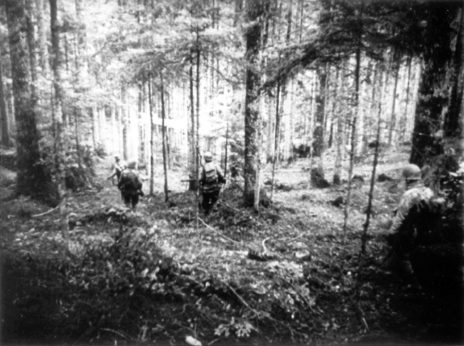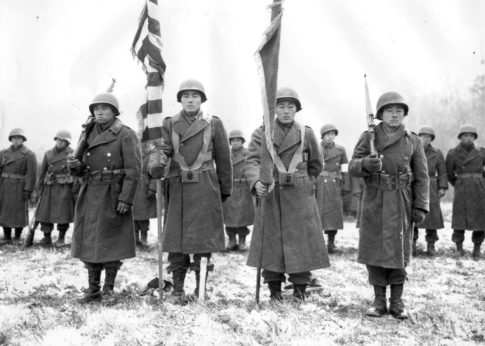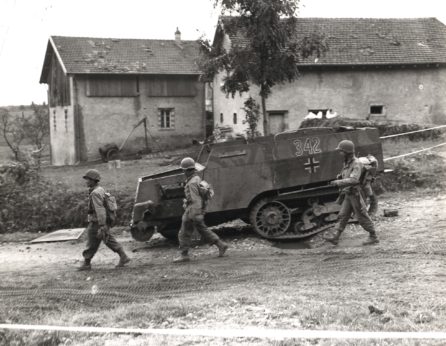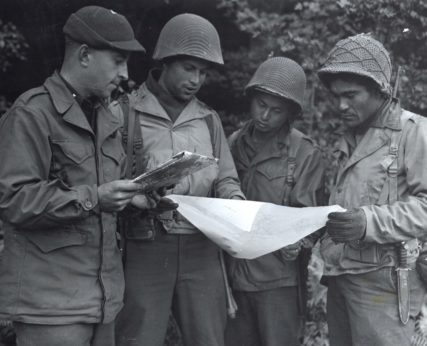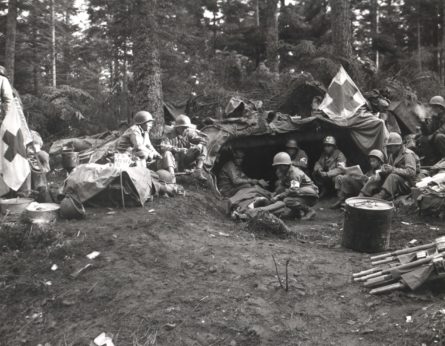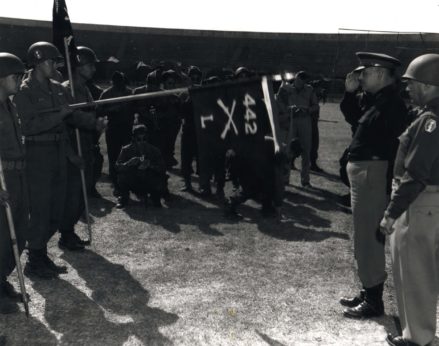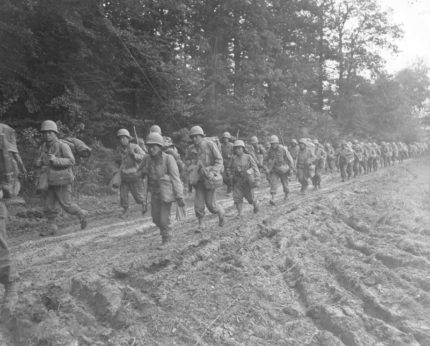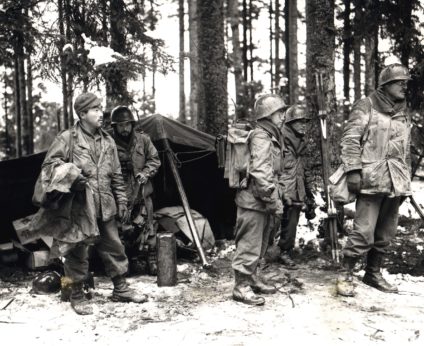The War Years (1941 – 1946): Serving the U.S.
442nd Regimental Combat Team
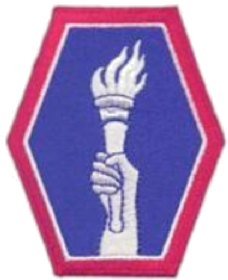
The 442nd Regimental Combat Team (RCT) was organized on March 23, 1943, in response to the War Department’s call for volunteers to form the segregated Japanese American army combat unit. More than 12,000 Nisei (second-generation Japanese American) volunteers answered the call.
Ultimately 2,686 from Hawaii and 1,500 from U.S. incarceration camps assembled at Camp Shelby, Mississippi in April 1943 for a year of infantry training.
The 442nd went to Italy on May 1, 1944. There, it joined the 100th Infantry Battalion that had preceded it by nine months. The 100th was designated the First Battalion of the 442nd.
The 442nd was assigned to Gen. Mark Clark’s 5th Army and underwent its baptism under fire at Suvereto, Italy, on June 26, 1944. For the next 10 weeks, the unit engaged the German army in the mountainous Italian terrain, driving the enemy forces north to the Arno River. On August 15, 1944, the unit’s Anti-Tank Company was detached from the 442nd and ordered to make an assault glider landing in the invasion of southern France.
From October through November 1944, the rest of the 442nd served in northeastern France with the 36th Infantry Division in the dark and bitter-cold forests of the Vosges Mountains.
The Germans knew no invading force in history had ever succeeded in defeating the controlling force there. However, the 442nd liberated the French towns of Bruyeres, Belmont and Biffontaine.
As it was about to be pulled back to enjoy hot meals and showers, the 442nd was ordered back to the front lines. The regiment’s mission: to rescue a battalion of the 36th “Texas” Division. Hitler had personally ordered the 36th to be annihilated so they couldn’t fight on German soil. The 442nd suffered casualties two to three times higher than the 211 men they saved.
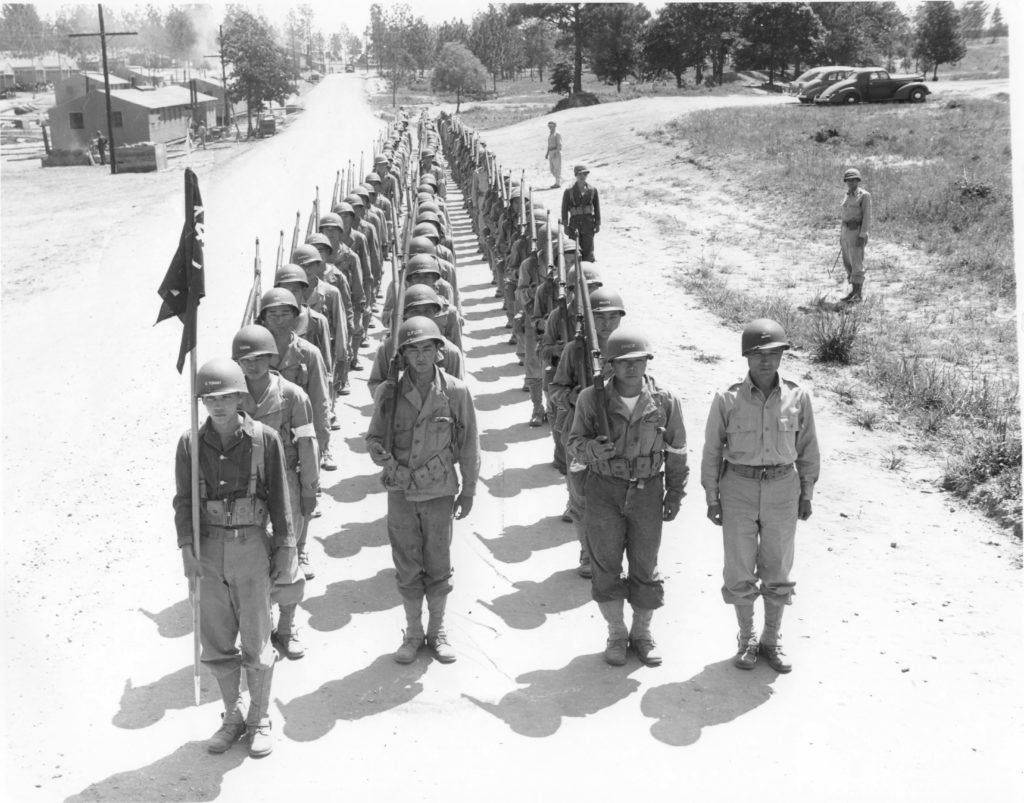
Your combat record has not been surpassed.
Secretary of War Robert P. Patterson’s personal representative
The intensity of the fighting in France can be best illustrated by the high number of awards the 442nd received in slightly more than one month of combat in the Vosges: five Distinguished Unit Citations, five Medals of Honor, and nine Distinguished Service Crosses.
In late March 1945, the unit’s 522nd Field Artillery Battalion assaulted Germany and helped liberate Jewish survivors at a sub-camp of Dachau.
The 442nd returned to Italy in April 1945 at the request of General Mark Clark. He wanted the unit to help the 5th Army breach the German Gothic Line that had blocked the Allied advance for six months. The 442nd broke through the German defenses at Mount Folgorito in less than a day – and in the next three weeks forced the German Army to retreat north to the Po Valley, where it finally surrendered on May 2, 1945.
In just 19 months of combat against Germany, the 100th Infantry Battalion and 442nd RCT compiled a remarkable fighting record. It came at a high price, however. More than 800 were killed or missing in action. The 442nd, including the 100th Battalion, was honored with seven Distinguished Unit Citations, more than 4,000 Purple Hearts, and a large number of individual decorations for bravery, including 21 Medals of Honor, 29 Distinguished Service Crosses, 588 Silver Stars, and more than 4,000 Bronze Stars.
The 442nd’s battle cry had been “Go For Broke.” They lived up to their motto. On July 4, 1946, Secretary of War Robert P. Patterson’s personal representative told the 442nd RCT that “your combat record has not been surpassed.”
Subsequently, on July 15, 1946, President Harry Truman reviewed the 442nd on the outer south lawn of the White House following its march down Constitution Avenue. He paid the Nisei the ultimate tribute when he said, “You fought the enemy abroad and prejudice at home and you won.” Nisei loyalty had received the ultimate validation.
Edited From “Japanese Eyes, American Heart” 1998. Reprint Approved By Ted Tsukiyama, Esq.

